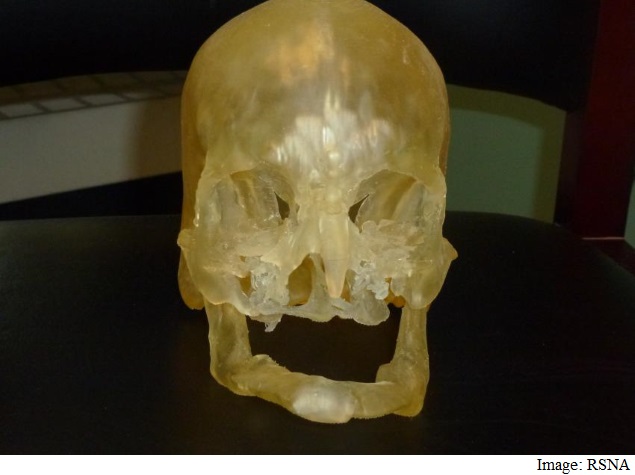- Home
- Laptops
- Laptops News
- 3D Printing to Help Guide Human Face Transplants
3D Printing to Help Guide Human Face Transplants

"This is a complex surgery and its success is dependent on surgical planning," said Frank Rybicki from Brigham and Women's Hospital in the US.
"Our study demonstrated that if you use this model and hold the skull in your hand, there is no better way to plan the procedure," Rybicki added.
"The 3D printed model helps us to prepare the facial structures so when the actual transplantation occurs, the surgery goes more smoothly," said Amir Imanzadeh, research fellow from the Brigham and Women's Hospital.
Physicians at the Brigham and Women's Hospital performed the first full face transplantation in the US in 2011 and have subsequently completed four additional face transplants.
The procedure is performed on patients who have lost some or all of their face as a result of injury or disease.
In the study, the researchers assessed the clinical impact of using 3D printed models of the recipient's head in the planning of face transplantation surgery.
Each of the transplant recipients underwent pre-operative CT with 3D visualisation.
To build each life size skull model, the CT images of the transplant recipient's head were segmented and processed using customised software, creating specialised data files that were fed into a 3D printer.
"The 3D model is important for making the transplant cosmetically appealing," Rybicki said.
The researchers said they also used the models in the operating room to increase the surgeons' understanding of the anatomy of the recipient's face during the procedure.
The study was presented at the ongoing annual meeting of the Radiological Society of North America in Chicago.
Get your daily dose of tech news, reviews, and insights, in under 80 characters on Gadgets 360 Turbo. Connect with fellow tech lovers on our Forum. Follow us on X, Facebook, WhatsApp, Threads and Google News for instant updates. Catch all the action on our YouTube channel.
Related Stories
- Samsung Galaxy Unpacked 2025
- ChatGPT
- Redmi Note 14 Pro+
- iPhone 16
- Apple Vision Pro
- Oneplus 12
- OnePlus Nord CE 3 Lite 5G
- iPhone 13
- Xiaomi 14 Pro
- Oppo Find N3
- Tecno Spark Go (2023)
- Realme V30
- Best Phones Under 25000
- Samsung Galaxy S24 Series
- Cryptocurrency
- iQoo 12
- Samsung Galaxy S24 Ultra
- Giottus
- Samsung Galaxy Z Flip 5
- Apple 'Scary Fast'
- Housefull 5
- GoPro Hero 12 Black Review
- Invincible Season 2
- JioGlass
- HD Ready TV
- Laptop Under 50000
- Smartwatch Under 10000
- Latest Mobile Phones
- Compare Phones
- Honor Win RT
- Honor Win
- Xiaomi 17 Ultra Leica Edition
- Xiaomi 17 Ultra
- Huawei Nova 15
- Huawei Nova 15 Pro
- Huawei Nova 15 Ultra
- OnePlus 15R
- Asus ProArt P16
- MacBook Pro 14-inch (M5, 2025)
- OPPO Pad Air 5
- Huawei MatePad 11.5 (2026)
- Xiaomi Watch 5
- Huawei Watch 10th Anniversary Edition
- Acerpure Nitro Z Series 100-inch QLED TV
- Samsung 43 Inch LED Ultra HD (4K) Smart TV (UA43UE81AFULXL)
- Asus ROG Ally
- Nintendo Switch Lite
- Haier 1.6 Ton 5 Star Inverter Split AC (HSU19G-MZAID5BN-INV)
- Haier 1.6 Ton 5 Star Inverter Split AC (HSU19G-MZAIM5BN-INV)
















